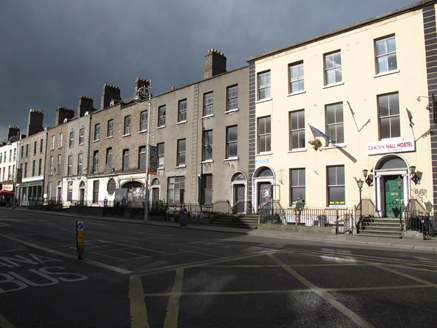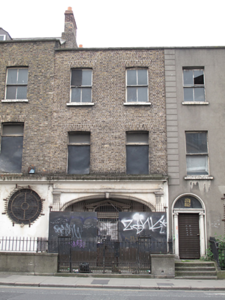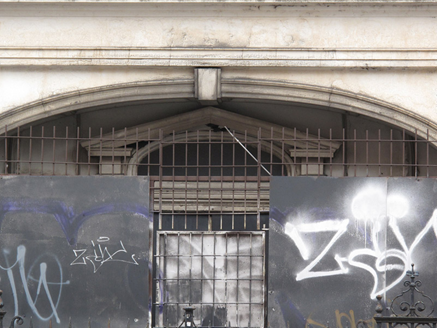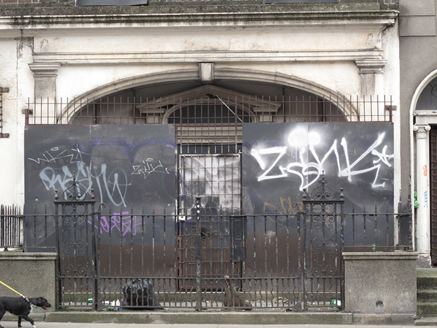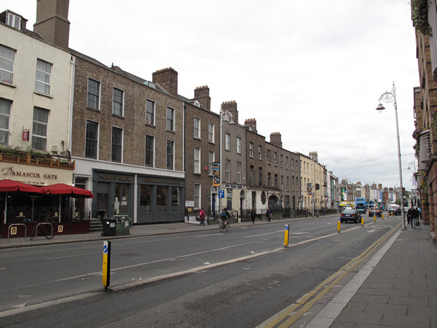Survey Data
Reg No
50110414
Rating
Regional
Categories of Special Interest
Architectural, Artistic, Historical
Previous Name
Earley & Company
Original Use
House
Historical Use
Shop/retail outlet
Date
1810 - 1820
Coordinates
315616, 232823
Date Recorded
01/05/2017
Date Updated
--/--/--
Description
Attached two-bay three-storey former house over concealed basement, built c. 1815, having later commercial unit inserted to ground floor. M-profile roof, hipped to north, with shared brown brick chimneystacks, concealed behind brown brick parapet having cut granite coping. Brown brick, laid in Flemish bond, moulded render cornice over rendered wall to ground floor. Square-headed window openings with masonry sills and mixed two-over-two pane timber sliding sash and replacement windows. Those to first floor blocked. Elliptical-headed arch to ground floor having moulded render architrave and keystone, flanked by pilasters supporting fascia. Elliptical-headed doorcase with broken bed pediment and plain fanlight, set within recessed porch. Currently blocked. Double-leaf wrought-iron gate flanked by wrought-iron decorative panels having cast-iron finials. Wrought-iron railings with cast-iron corner posts set on rendered plinth wall, to front.
Appraisal
This building retains its early form and character to the upper floors. The stucco façade to the ground floor is of contextual as well as visual interest, serving as a shopfront and an advertisement for the company of church decorators and stained glass artists which occupied the building in the early twentieth century. Casey (2005) notes that this building and its neighbour to the south 'were remodelled in 1912 by T.J. Cullen for Earley & Co.'. The continued cornice and rendered ground floor creates a unified commercial unit across the pair of buildings. Casey refers to Nos. 1-12 Camden Street Upper as 'the most complete and satisfying terrace on the street'. St. Kevin's Port was renamed Camden Street, after the 1st Earl Camden, in 1776. Much of the original housing stock on the street was rebuilt in the nineteenth and twentieth centuries.
